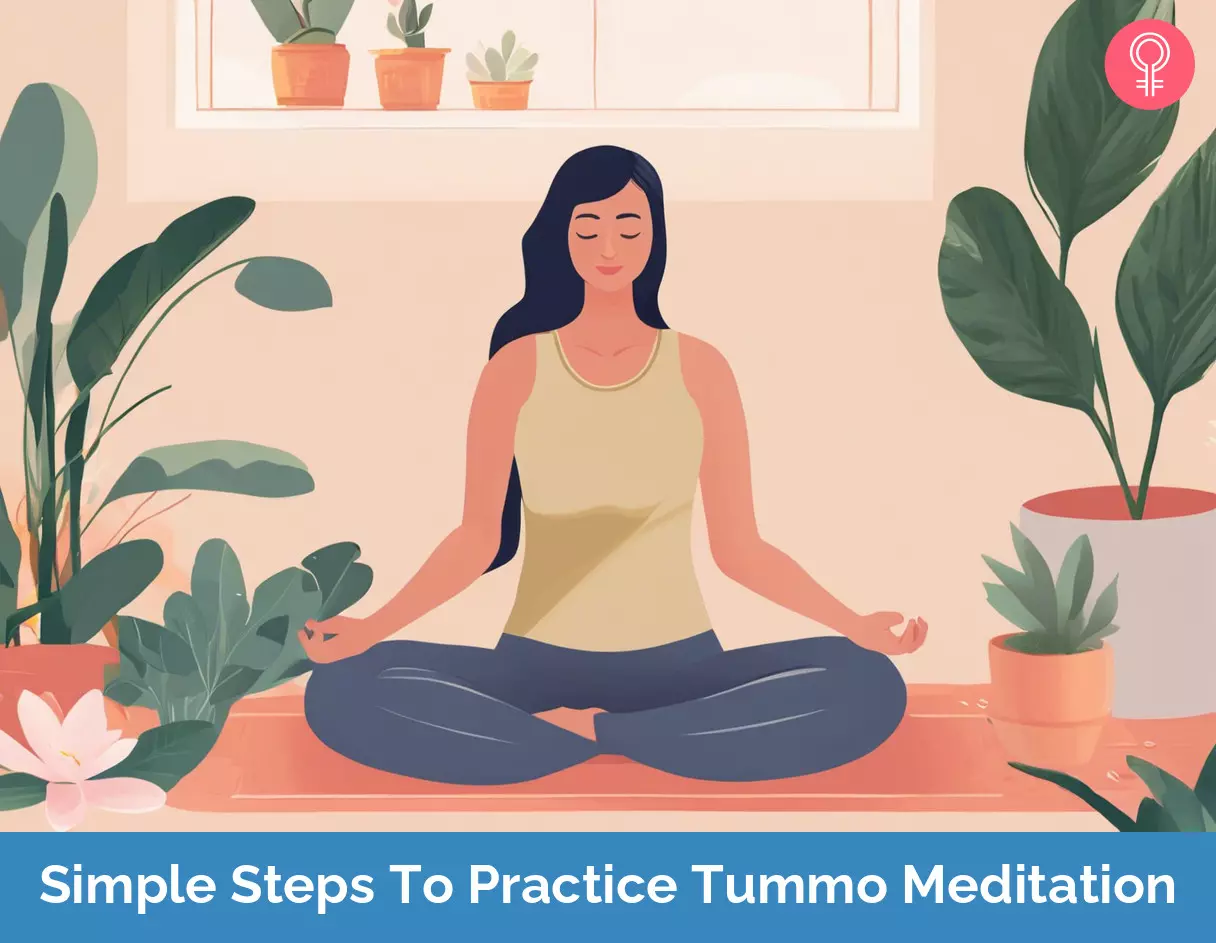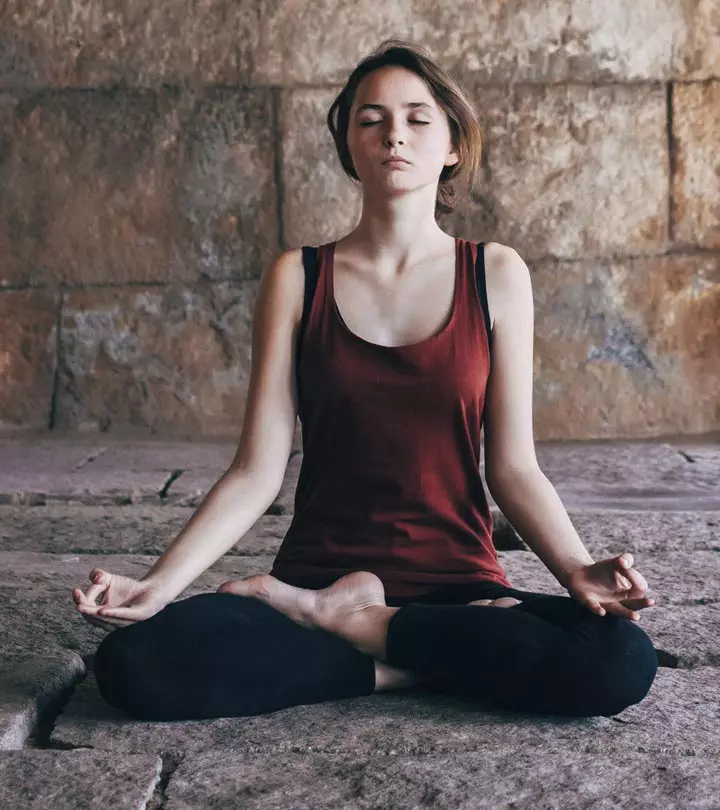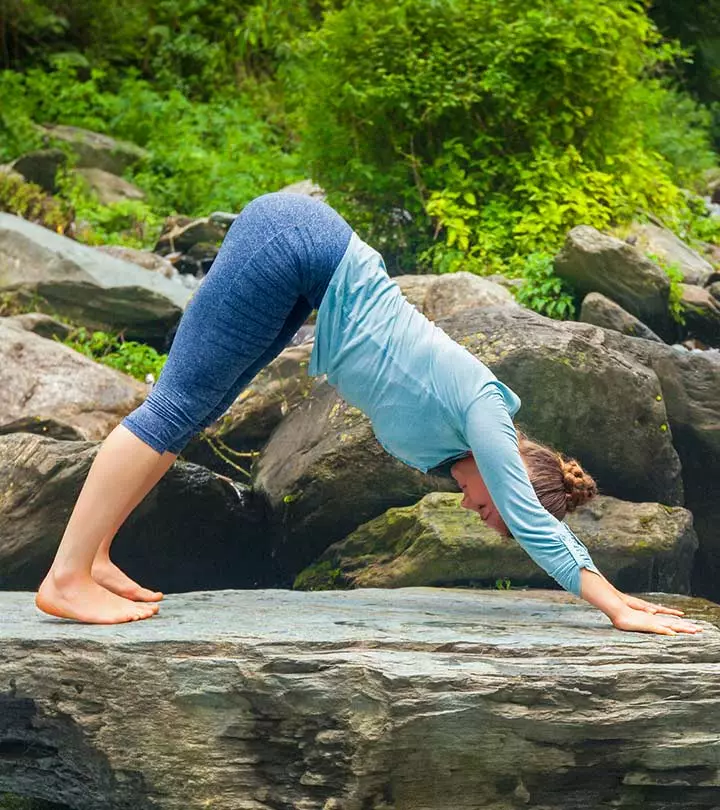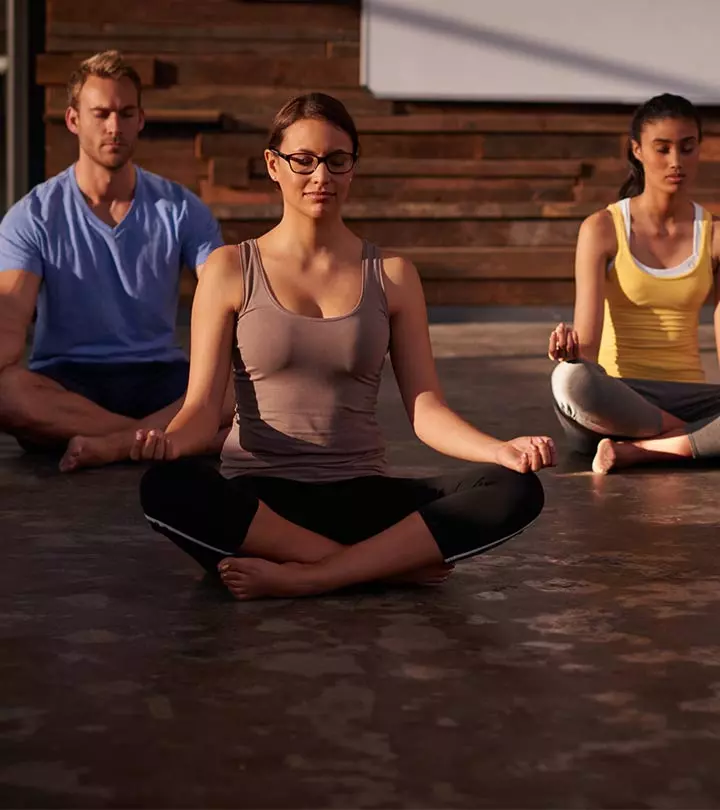8 Simple Steps To Practice Tummo Meditation
Ace this technique to eliminate all things negative from life and grow spiritually.

Image: Shutterstock.com
Buddhist monks used to practice Tummo meditation, an ancient method of meditation. It is a type of tantric yoga that began thousands of years ago in the Himalayas. This meditation is said to burn away all types of negative thoughts! It will help you think clearly by redirecting the ideas in your mind. Three damp clothes could be used for this exercise. In cold and freezing temperatures, wear your damp garments over your nude body.

 Trivia
TriviaIn This Article
What is Tummo meditation?
Tummo is a Tibetan word which means ‘fierce’ or ‘inner fire’. In Sanskrit Tummo is called as चण्डाली (chandaali), means fierce woman. Tummo meditation is practiced in the Vajrayana Buddhist lineage. Devout Buddhists usually perform Tummo meditation. This faith recognizes six different types of meditation, one of which is Tummo. It is a meditation that awakens your inner fire and unleashes your spiritual energy, that cures your inner heart of sinful ideas and assists you in controlling your mind and body to reach the goal of meditation. You will undoubtedly learn a lot about Tummo meditation if you visit a Tibetan Buddhist monastery. But, for the time being, let us see what this practice is, how it is performed, and the health benefits it provides. Keep reading to know more!
Key Takeaways
- Tummo meditation may help awaken your inner fire, eliminate negative thoughts and improve concentration.
- It is a Tibetan Buddhist meditation practice that involves visualization and breath control.
- Tummo meditation may activate your body’s inner heat and cultivate mental clarity and stability.
- It may improve your memory.
How To Practice Tummo Meditation?
Tummo Meditation is a simple and basic technique that teaches you how to breathe.
This is a Pranayama based meditation technique. To do it the right way, use the following steps:

1. Get seated on a mat. Now cross your legs and place them one over the other. Your hands could be placed on the knees.

2. Keep your eyes closed now. Try and focus on yourself by removing all wrong thoughts. Thoughts emerge from different directions and tend to spoil your mind. This is what you should avoid. Your mind should be peaceful. All dirty and sinful thoughts should be removed.

3. When you breathe, there are noticeable movements that happen in the bowel. It keeps going up and gently coming down.

4. Now you can continue to focus on the bowel and its movement during those inhaling and exhaling periods.
5. Gently begin to come upwards and continue to concentrate on the nasal area. Keep your focus on the breath as it inhales and exhales.
6. When you have reached that position where you can concentrate without having any wrong thoughts, you can picture your body as a hollow one in your mind.
7. Now think that a hot lamp has been kept right in the middle of a hollow balloon. All heat will be discharged.
8. Watch as your body gently begins to heat up.
Health Benefits Of Tummo Meditation:
The health benefits of Tummo meditation are multiple.
- It gives you the power to fight in ways you have never imagined. This is the battle of the mind.
- It improves your concentration power and promotes awareness.
- It boosts your memory power.
- It provides relaxation and helps you become calm and composed.
- It may enhance emotional resilience and help alleviate stress and anxiety.
- It provides enlightenment and activates your inner fire.
- It cleanses your heart and aids physical health.
- It will also improve the breathing techniques and the health of your lungs.
According to a report published by the CDC in 2018, the reliance of US adults on meditation increased from 4.1% in 2012 to 14.2% in 2017, which was a threefold increase. Women (16.3%) were more likely than men (11.8%) to use meditation. Adults aged 45–64 (15.9%) performed meditation more than those aged 18–44 and 65 and over (13.4% each).
 Quick Tip
Quick TipSurprising Example Of Tummo Meditation:

There has been a bold and valiant person named Wim Hof who was called the ‘Iceman’ because of his insane capacity of bearing up with the cold. He was the first one to run barefoot in the Arctic, and has at the moment set his target towards the Antarctica! Imagine that! He holds more than 15 world records, and all of them are because of his ability to bear up with the ice. He stayed immersed in an ice bath for seventy three minutes in total. He is someone who enjoys challenging his body to extreme levels, especially keeping up with cold weather. He even made an attempt to climb the Mount Everest, dressed only in shorts. Isn’t that crazy?
Roman Maze, a blogger, shared his experience of trying out the Wim Hof method of tummo meditation and he was not disappointed. He wrote, “In my personal daily life, this technique helped me with getting up in the morning and providing me with energy after exhaustion (i).”
Infographic Excerpt: Tumma Meditation: How To Perform + Top 5 Benefits
We are constantly bombarded with negativity – be it the media or the bustle of our own lives. Hence, to create our own inner sanctity, spirituality, and tranquility, meditation is key. Tummo meditation is an ancient method practiced by monks that can help one get rid of any negativity and lead a healthy, positive life. But how do you do it? How does it benefit you? We have answered those questions through the infographic below. Take a look.
Some thing wrong with infographic shortcode. please verify shortcode syntaxTummo meditation is a simple breathing technique that allows you to drive out all the negative thoughts from your inner self. This ancient Buddhist meditative technique improves concentration and memory, promotes mindfulness and discipline, provides emotional balance and inner peace, cleanses the heart, keeps the lungs healthy, and helps you become a calm and composed individual. Additionally, it may help promote self-awareness and self-control. Practice tummo meditation in a good state of mind and eliminate all the wrong and sinful thoughts that emerge out of nowhere to distract your mind. By the time you master this meditative technique, you will have evolved into a completely transformed and determined human being filled with positivity.
Frequently Asked Questions
Is tummo breathing the same as the breath of fire?
Although the techniques are similar, both are quite different. While tummo breathing involves visualization of fire, the breath of fire does not.
Is tummo a form of kundalini yoga?
Yes, tummo can be referred to as kundalini. It is also a form of energy accumulation and is similar to kundalini yoga in this aspect.
Is Tummo meditation dangerous?
Tummo meditation can be practiced safely, but it’s important to learn from a qualified teacher and follow proper guidelines to avoid potential risks.
How long does it take to master Tummo meditation?
The time to master Tummo meditation varies, depending on individual practice and dedication.
Can anyone practice Tummo meditation?
Yes, anyone can practice Tummo meditation with proper guidance and instruction.
How often should I practice Tummo meditation?
It is recommended to practice Tummo meditation regularly, ideally on a daily basis.
Are there any contraindications for Tummo meditation?
People with certain medical conditions may need to consult with a healthcare professional before practicing Tummo meditation.
Can Tummo meditation be combined with other spiritual or wellness practices?
Yes, Tummo meditation can be combined with other spiritual meditation or wellness practices to enhance overall well-being.
What is the difference between Tummo meditation and other forms of meditation?
Is Tummo meditation a religious practice?
Tummo meditation involves visualization and controlled breathing techniques that focus on generating internal heat, which distinguishes it from other forms of meditation. It has its roots in Tibetan Buddhism, but it can also be practiced as a secular technique for promoting physical and mental health.
Illustration: Simple Steps To Practice Tummo Meditation

Image: Stable Diffusion/StyleCraze Design Team
Unlock the ancient art of Tummo breathing and harness its transformative power. Watch this enlightening video to learn the techniques and experience the profound benefits of this practice.
Personal Experience: Source
StyleCraze's articles are interwoven with authentic personal narratives that provide depth and resonance to our content. Below are the sources of the personal accounts referenced in this article.
i. How to combine powerful breathwork with deep meditationhttps://lunasolblog.wordpress.com/2017/09/11/tummo-inner-fire/
References
Articles on StyleCraze are backed by verified information from peer-reviewed and academic research papers, reputed organizations, research institutions, and medical associations to ensure accuracy and relevance. Read our editorial policy to learn more.
- Neurocognitive and Somatic Components of Temperature Increases during g-Tummo Meditation: Legend and Reality
https://www.ncbi.nlm.nih.gov/pmc/articles/PMC3612090/
Read full bio of Sri Yogi Anand
Read full bio of Shirin Mehdi
Read full bio of Arshiya Syeda
Read full bio of Moksha Gandhi





















Community Experiences
Join the conversation and become a part of our empowering community! Share your stories, experiences, and insights to connect with other beauty, lifestyle, and health enthusiasts.